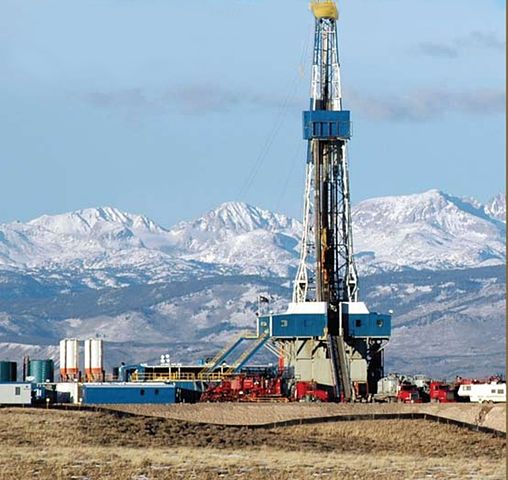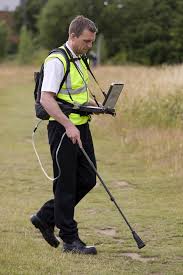 Natural gas is hailed as a cleaner source of energy than coal, as when it is burned it generates half the amount of carbon dioxide that coal does. However, when natural gas is extracted some leakage occurs, and these natural gas leaks could potentially speed up climate warming.
Natural gas is hailed as a cleaner source of energy than coal, as when it is burned it generates half the amount of carbon dioxide that coal does. However, when natural gas is extracted some leakage occurs, and these natural gas leaks could potentially speed up climate warming.
Natural gas consists primarily of methane gas, a greenhouse gas that although currently much less prevalent than carbon dioxide, is 20 times more potent as a greenhouse gas. It is therefore critical that we understand just how much leakage occurs during natural gas extraction processes in order to determine the environmental benefits of using this as an alternative energy source. However, there is much confusion, debate and controversy among policy-makers and scientists as to exactly how much methane leaks into the atmosphere during natural gas extraction.
Scientists tackling this problem will discuss problems associated with discovering and assessing methane gas leaks, and will present new methods that can be used to determine the rate of methane leakage at the 249th National Meeting & Exposition of the American Chemical Society (ACS), being held in Denver, Colorado, this week.
"I will discuss new and different techniques we are developing to make atmospheric observations that are being used to locate, quantify and attribute sources of leaked methane emissions," says Eric Kort, from the University of Michigan, who will be presenting the findings. "Also, we are using for the first time space-based observations to identify and quantify methane emissions from broad energy production regions and have found unexpected, high methane releases in a part of the U.S."
Because methane is such a potent greenhouse gas, the rate of methane leakage is currently a hot topic amongst policymakers. The US Environmental Protection Agency (EPA) together with several US states are considering imposing tighter regulations on the oil and gas sector, including hydraulic fracturing, or 'fracking' operators, who collectively are responsible for an estimated 30% of these emissions, with half of these emissions coming from drilling.
Yet, according to Kork, getting a clear picture of the total leakage is not that simple, considering there are over 500,000 oil and gas wells in the U.S. Current estimates put forward by the EPA and the oil and gas industry show methane leakage rates are low. However, these estimates have been challenged, with recent studies showing higher methane emission rates.
Kort and his team are trying to resolve these differences by turning to satellite observations to identify global methane leakage hot spots.
In a
scientific paper published last fall the researchers analyzed data from the European Space Agency's Scanning Imaging Absorption Spectrometer for Atmospheric Cartography to measure methane for each year over a seven year period from 2003-2009. The team then calculated the emission rate required to produce the concentrations of methane recorded, and conducted high-res regional simulations using a chemical transport model that simulates how chemical compounds are moved around and changed by weather.
"We combine those space-based numbers with modeling to quantify emissions," Kort says.
Their results showed that methane emission rates were three times greater than expected in belt across the southwestern region of the US. However, Kort stressed that identifying the key region is just the first step. The next step, he says, is to pin-point the sources of these emissions and to expand their methane measurement techniques, including taking ground-based measurements from mobile vans, and using aircraft to conduct aerial surveys over potential emission sources.
Sources of Methane Gas Emissions
To complicate matters further, methane gas is also emitted from many other sources, including landfill sites, farm animals, and wetlands. In order to differentiate between fossil-fuel and non-fossil-fuel sources, Kort and his colleagues measure ethane as well as methane, as they have distinctly unique signatures.
"The two are different compounds with different properties," he notes. "Methane from oil and gas contains ethane, but biogenic methane from landfills, cattle and wetlands does not. So ethane becomes a nice tracer, or indicator, of whether methane is from a fossil or non-fossil source."
 Detecting Natural Gas Leaks
Detecting Natural Gas Leaks
However, natural gas operators can take measures to monitor methane leaks on the ground to help them keep their operations clean and to conform to environmental regulations. The
TDL-500 Portable Laser Diode Methane Detector enables operators to not only detect natural gas leaks, but to pin-point their location with precision so that they can quickly repair faulty pipes or well-heads to prevent further leakage, and thus reduce their emissions. This instrument is also useful for detecting methane leaks in other applications, such as biogas plants, landfill sites, and animal feed lots.
Journal Reference
Kort, E.A., C. Frankenberg, K.R. Costigan, R. Lindenmaier, M.K. Dubey, & D. Wunch. (2014),
Four Corners: The largest US methane anomaly viewed from space.
Geophys. Res Lett., 41, 6898-6903,
doi: 10.1002/2014GL061503.
Image Credit: "Rig wind river“ from The Pinedale Field office of the BLM. - The cover of the "Pinedale Anticline DSEIS", a Federal Document, via
Wikimedia Commons

 Natural gas is hailed as a cleaner source of energy than coal, as when it is burned it generates half the amount of carbon dioxide that coal does. However, when natural gas is extracted some leakage occurs, and these natural gas leaks could potentially speed up climate warming.
Natural gas is hailed as a cleaner source of energy than coal, as when it is burned it generates half the amount of carbon dioxide that coal does. However, when natural gas is extracted some leakage occurs, and these natural gas leaks could potentially speed up climate warming.


